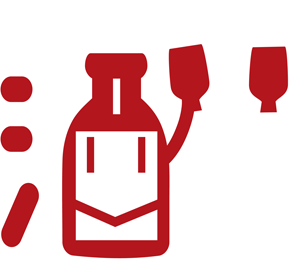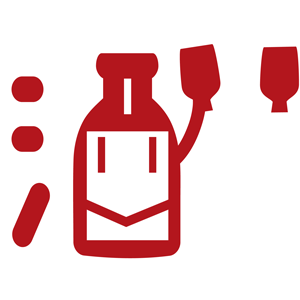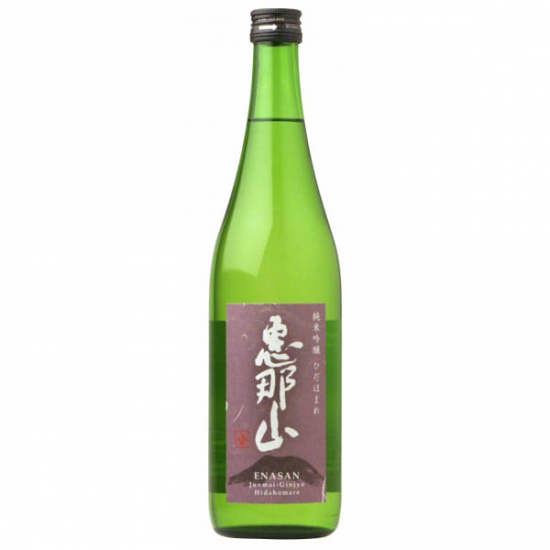Gifu's 10 Sake Recommendations. The Prince of Sake, Who Has Tasted More Than 5,000 Kinds of Sake, Carefully Selects the Best Sake Without Preconception!
In our last issue, we introduced the 10 best’s sake in Aichi, and we have received a lot of positive feedback. Thank you all for reading it. There are still many delicious sake in Japan! For example, in Gifu Prefecture, where the author originated from, there are 42 sake breweries, just like in Aichi, and sake production is very active. I, Yuichi Kondo, the prince of sake, having tasted more than 5,000 kinds of sake, would like to introduce you to the 10 most recommended sake in Gifu Prefecture, following Aichi Prefecture, without any discovery.
What are the characteristics of sake from Gifu Prefecture?
Gifu Prefecture is home to three major rivers - the Ibigawa, Nagara, and Kiso Rivers - and is rich in a variety of water qualities and climates, producing sake of great individuality despite the absence of an ocean. As a result, there are as many as six sake brewing associations in Gifu Prefecture. Gifu Sake Brewers Association, Seino Sake Brewers Association, Seki Sake Brewers Association, Tajimi Sake Brewers Association, Nakatsugawa Sake Brewers Association, and Hida Sake Brewers Association.
Sake from the Hida region is not often shipped outside the region, and many of them are clear and refreshing. Sake from the Seino region is rich, powerful, and full of flavor.
10 Sake recommendations from Gifu Prefecture, I really recommend you try it!
I have selected 10 sakes from Gifu Prefecture, which is full of individuality, that I would like you to try without any personal feelings. Since I am from Gifu, I really had a hard time deciding which 10 sake I would recommend. There are many more sake recommendations than these, but I will introduce them here in order.
1. Fukamori, Junmai Ginjo, Gohyakumangoku 55 (ふかもり 純米吟醸 五百万石 55) [Yamauchi Shuzo (山内酒造) / Nakatsugawa City, Gifu Prefecture]
Mr. Nobuyuki Ohga, owner of the sake store "Nakasendo Ohga" has taken over the Yamauchi Sake Brewery, which has been in business since the early Edo period and is brewing sake as the toji (a chief sake maker). This "Fukamori" is a limited distribution’s sake made with the intention of producing a sake that Mr. Ohga would particularly like to drink. I remember how delicious it was before storage. I can't help but look forward to seeing how the mild nutty aroma, core flavor, and clean aftertaste that disappears so quickly will change after a year of aging.
2. Kujiranami, Junmai Ginjo (鯨波 純米吟醸) [Ena Jozo (恵那醸造) / Nakatsugawa City, Gifu Prefecture]
This classic medium type (medium-bodied type with aromas of freshly cooked rice, freshly baked bread, and nuts) is made from Gifu Prefecture's sake rice, Hidahomare, polished to 60% and finished with an alcohol content in the 15-degree range.
It is a perfect food wine type that is truly healing. It is not too light or too heavy, and it is well-balanced enough to be served either cold or warmed. It is a good balance that can be served either cold or warmed without hesitation. Please be careful not to drink too much, as you will find yourself finishing a bottle without even realizing.
3. Tsushimaya Gaiden, Contract-cultivated Rice Yamadanishiki, Junmai Bingakoi 2023 (津島屋外伝 契約栽培米山田錦 純米 瓶囲い2023)
[Miyozakura Jozo (御代桜醸造) / Minokamo City, Gifu Prefecture]
This limited distribution’s sake is made from Yamadanishiki produced in Gifu Prefecture, which is considered a mirage because it is not an encouraged variety by Gifu Prefecture, and polished to 60%, with an alcohol content in the 16 percent range.
I once visited a farmer who grows the rice used for this sake. The Yamadanishiki, grown with reduced use of agricultural chemicals, has such potential that the brewer says, "It may not look good, but it can be a better sake than the Yamadanishiki from Hyogo Prefecture. The quality of this sake is also recognized by the fact that it won Gold Award in the Premium category of the Kan Sake Award (全国燗酒コンテストのプレミアム部門) in both 2020 and 2023.
4. Ibi WHITE (射美 WHITE) [Sugihara Shuzo (杉原酒造) / Ibi-gun, Gifu Prefecture]
If you are a sake lover, you have probably thought that you would like to try this sake at least once. This is an extremely rare sake made by the smallest sake brewery in Japan.
Yellow koji is usually used for koji for sake, but this one-use white koji, which is often used in shochu production and produces citric acid. White koji is weaker than yellow koji, so it is made in a koji room dedicated to white koji, which is hand-built by the brewer himself.
As expected, the refined vanilla aroma gives it a special flavor, and the superb sweetness that bursts forth the moment you put it in your mouth is combined with the unique acidity that is a characteristic of white koji that lies behind it.
The long aftertaste is in keeping with the image of Ibi, which has been made with yellow koji, but the faint astringency that exists within it also produces a crispness, making it a bottle that shines with an individuality that can only be experienced with WHITE.
5. MINO de BLANC, Junmai, Unfiltered Nama Genshu (MINO de BLANC 純米 無濾過生原酒) [Tokoro Shuzo (所酒造) / Ibi-gun, Gifu Prefecture]
This private brand was planned by a group of five young retail’s sake brewers in Gifu Prefecture, using Hatsushimo from Kaizu City, Gifu Prefecture. The brewer is Tokoro Shuzo (Tokoro Brewery) of Ibigawa-cho, Ibi-gun, who also makes "Bojimaya".
It is a pure rice unfiltered unpasteurized sake with a crisp acidity expressed using white koji, a refreshing grape-like aroma, and a dry, sharp taste typical of Fusashimaya. It has a good balance of acidity and umami that is somewhat similar to that of white wine and is an interesting sake that shows its true value when served well chilled with olive oil.
6. Takesuzume Kimoto Junmai, Gifu Prefecture Yamada (竹雀 生酛純米 岐阜県産山田) [Otsuka Shuzo (大塚酒造) / Ibi-gun, Gifu Prefecture]
This is a particularly heavy classic full-bodied, dark type of sake with a robust flavor, made from 70% polished Yamadanishiki produced in Ikeda-cho, Otsuka Shuzo's (Otsuka Brewery) hometown, and finished in the 15° alcohol content range.
The "Yamada" in the name is since Gifu Prefecture does not promote Yamadanishiki, so we refrained from proudly proclaiming that it was produced in Gifu Prefecture. The brewer, Mr. Otsuka, helped cultivate the Yamadanishiki, and to bring out its full character, it is polished to only 30% and then aged for about four years. It may be difficult for beginners to drink, but it looks great in winter when served warmed with miso-based hot pots of thickly seasoned chicken, so please give it a try.
7. Himuro, Daiginjo Nama-zake (氷室 大吟醸生酒) [Niki Shuzo (二木酒造) / Takayama City, Gifu Prefecture]
Established in 1695, the flagship of the Niki Shuzo (Niki Brewery), which is renowned as the only Ginjo brewery in the Hida region that makes only Ginjo, is this "Himuro Daiginjo Nama Zake". It is made by polishing Hidahomare to 50% and is released all year round in its unpasteurized state after being pressed during the harsh winter months. The aroma is gorgeous and fruity, but at the same time, it has a nutty, classic nuance. The freshness of the new sake when it is first released is gradually rounded out in spring, summer, and fall, so it is interesting to see how the flavor changes depending on the season.
8. Enasan, Junmai Ginjo, Hidahomare (恵那山 純米吟醸 ひだほまれ) [Hazama Shuzo (はざま酒造) / Nakatsugawa-city, Gifu Prefecture]
The founding family moved to Nakatsugawa in 1601 and began brewing sake in the mid-Edo period, giving the brewery a history of over 200 years. 2014 saw a capital tie-up with Maruto Mizutani Co. In 2016, the brewery became a Junmai brewery that produces only sake with no added alcohol. Currently, the brewing director of "Enasan" is Yuyuki Iwagaya, a native of the sake distributor Maruto Mizutani. His mentor is Mr. Yoshifumi Sumikawa, who brews the popular brand "Toyo Bijin'' from Yamaguchi Prefecture. It is a pleasant bottle with a clear taste and a "gentle but firm core flavor" that is typical of Hidahomare.
9. Hyakujuro, Junmai Ginjo, Unfiltered Nama-Genshu, Byaku-en (百十郎 純米吟醸 無濾過生原酒 白炎) [Hayashi Honten (林本店) / Kakamigahara City, Gifu Prefecture]
Inspired by singer Yuki Saito's "Shiroi Honoo (White Flame)" this winter’s seasonal sake is brewed using the patented "additive-free lactic acid bacteria process" (Japan's first additive-free process utilizing lactic acid bacteria to enhance flavor) and is released as the first new sake each year.
It has a refreshing melon-like aroma and a fresh, powerful umami taste that gradually gives way to a deeper flavor. The tangy acidity in the aftertaste pleasantly stimulates the appetite, making you want to take one more sip and go on drinking. It is a crisp, dry type of sake that will have you running out of sake before you know it.
10. Reisen, Masamune Junmai Daiginjo, Nakakumi Genshu (醴泉 正宗 純米大吟醸 中汲み原酒) [Gyokusendo Shuzo (玉泉堂酒造) / Yoro-gun, Gifu Prefecture]
“Kikusuisen” is one of the three most famous waters in Japan, with the anecdote that it became the original name of "Yoro" as "rejuvenating water that nourishes the aged". This luscious spring water is brewed in Yoro. This Junmai Daiginjo is the best of all the Reisen’s products, brewed with 35% polished Yamadanishiki from the special A district of Hyogo Prefecture. Only the most well-balanced "Nakagumi" is bottled, avoiding the first half of the pressing process, which contains a relatively large amount of "Arabashiri," or ooze, and the second half, called "Seme," which is pressed with a lot of pressure. It has a gentle melon-like aroma and a soft vanilla-like flavor. It is a very enjoyable sake to drink cold or lukewarm.
Please make a toast with sake from Gifu, the author's hometown!
In this article, we have introduced 10 types of sake produced by small sake breweries in Gifu Prefecture.
Some of them are hard to find because of their small production volume or limited availability, but if you find them, you should give them a try.
There are many more unique and truly delicious sake from Gifu Prefecture, the author's hometown, than those introduced here. We have a wide variety of sake for everyone from beginners who are just starting out or have recently discovered the benefits of sake to experts who have been enjoying sake for decades. We hope you will give it a try.













